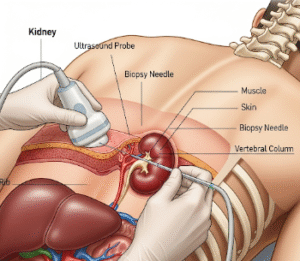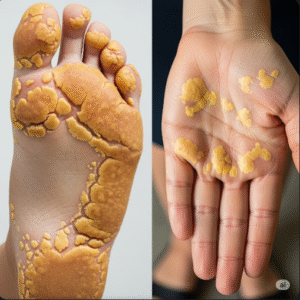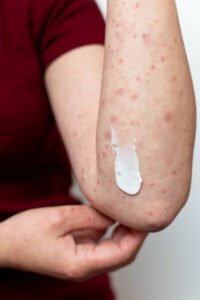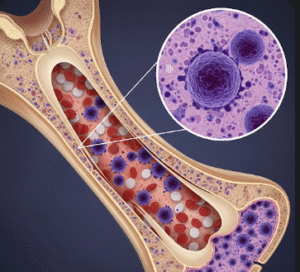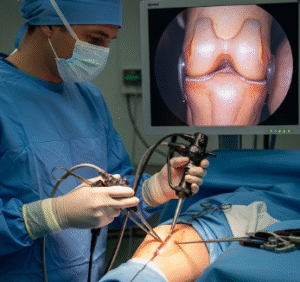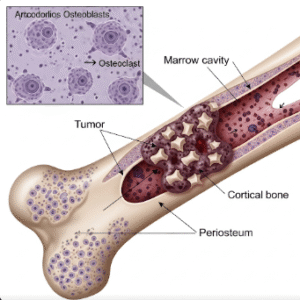Comprehensive management of common benign skin cysts with advanced dermatologic care
What it is
An epidermal inclusion cyst (EIC) is a benign, slow-growing skin cyst that develops when keratin (a protein normally found in skin and hair) becomes trapped beneath the skin. It is often referred to as a sebaceous cyst, though technically different.
EICs usually appear as firm, round lumps under the skin, commonly on the face, scalp, neck, trunk, and upper back. They may have a small central opening (punctum). While painless, cysts can become inflamed or infected, leading to swelling, redness, and tenderness.
In Korea, management of epidermal inclusion cysts is highly advanced, focusing on safe removal, cosmetic outcomes, and recurrence prevention.
Why it’s done
Care for epidermal inclusion cysts is recommended for several reasons:
✔ Symptom relief – Treats discomfort from inflamed or infected cysts.
✔ Cosmetic improvement – Eliminates visible lumps, especially in exposed areas.
✔ Infection prevention – Drains pus and reduces abscess formation risk.
✔ Diagnostic reassurance – Confirms the lesion is benign and not a skin tumor.
✔ Recurrence prevention – Ensures the cyst sac is removed fully.
Alternatives
Different management approaches may be considered.
→ Observation – Small, asymptomatic cysts may be left untreated.
→ Incision and drainage (I&D) – Provides immediate relief but often temporary, as the cyst wall remains.
→ Excision (surgical removal) – Definitive treatment that removes the cyst wall and prevents recurrence.
→ Laser excision – CO₂ or diode laser used for minimally invasive removal, reducing scarring.
→ Steroid injections – May reduce inflammation in painful, swollen cysts but do not cure.
In Korea, laser-assisted excision is widely favored for cosmetic and functional results.
Preparation
Before treatment, proper preparation ensures accurate diagnosis and safe care.
➤ Clinical evaluation – Dermatologists assess the cyst’s size, location, and symptoms.
➤ Medical history – Review of skin conditions, allergies, medications, and previous cyst episodes.
➤ Imaging/biopsy – Rarely performed, but may be used to rule out other skin tumors.
➤ Informed consent – Patients are counseled about drainage vs. excision options.
➤ Skin preparation – Cleaning the area and discontinuing blood thinners if necessary.
How it’s done
Epidermal inclusion cyst care depends on the chosen method.
➔ Incision and drainage (I&D) –
- Local anesthesia is applied.
- A small incision is made, and keratinous material is expressed.
- The cyst wall remains, so recurrence is likely.
➔ Excision (definitive treatment) –
- A precise incision is made over the cyst.
- The cyst wall and its contents are carefully removed intact.
- Wound is closed with stitches or adhesive strips.
➔ Laser-assisted excision (in Korea) –
- CO₂ or diode laser creates a small incision.
- Cyst is removed with minimal bleeding.
- Leaves smaller scars and faster recovery compared to standard surgery.
Most procedures take 20–45 minutes and are performed under local anesthesia.
Recovery
Recovery after cyst treatment is usually smooth.
→ Mild swelling, bruising, or soreness may occur for several days.
→ Antibiotic ointments or oral antibiotics may be prescribed if infection was present.
→ Sutures, if used, are removed after 7–10 days.
→ Healing is usually complete in 1–3 weeks.
→ Patients are advised to keep the site clean and avoid trauma.
→ Cosmetic results are often excellent, especially with laser techniques in Korean clinics.
Complications
Though safe, possible complications include:
✔ Recurrence – If the cyst wall is not fully removed.
✔ Infection – More likely if cyst was inflamed at the time of surgery.
✔ Scarring – Minimal with proper technique but possible with large cysts.
✔ Bleeding or bruising – Temporary and self-limiting.
✔ Pigmentation changes – Occasionally seen in darker skin tones after healing.
In Korea, the use of minimally invasive and cosmetic-focused methods reduces these risks.
Treatment options in Korea
Korea is internationally recognized for cosmetic dermatology and minimally invasive surgery, making it an excellent place for epidermal inclusion cyst care.
➤ Laser-assisted excision – CO₂ and diode lasers ensure precise removal with minimal scarring.
➤ Dermatology-plastic surgery collaboration – Ensures both medical safety and cosmetic outcomes.
➤ Scar prevention regimens – Clinics provide silicone gels, regenerative ointments, and LED light therapy after surgery.
➤ Painless outpatient care – Local anesthesia allows fast and comfortable procedures.
➤ Holistic approach – Many clinics combine cyst removal with skin rejuvenation treatments.
➤ International patient services – Korean hospitals offer bilingual consultations, structured care schedules, and follow-up for medical tourists.
➤ Research leadership – Korean dermatologists publish global studies on minimally invasive cyst removal and scar prevention, ensuring the most up-to-date protocols.
By choosing epidermal inclusion cyst care in Korea, patients receive definitive treatment, advanced cosmetic outcomes, and long-term reassurance, combining both medical expertise and aesthetic precision.






